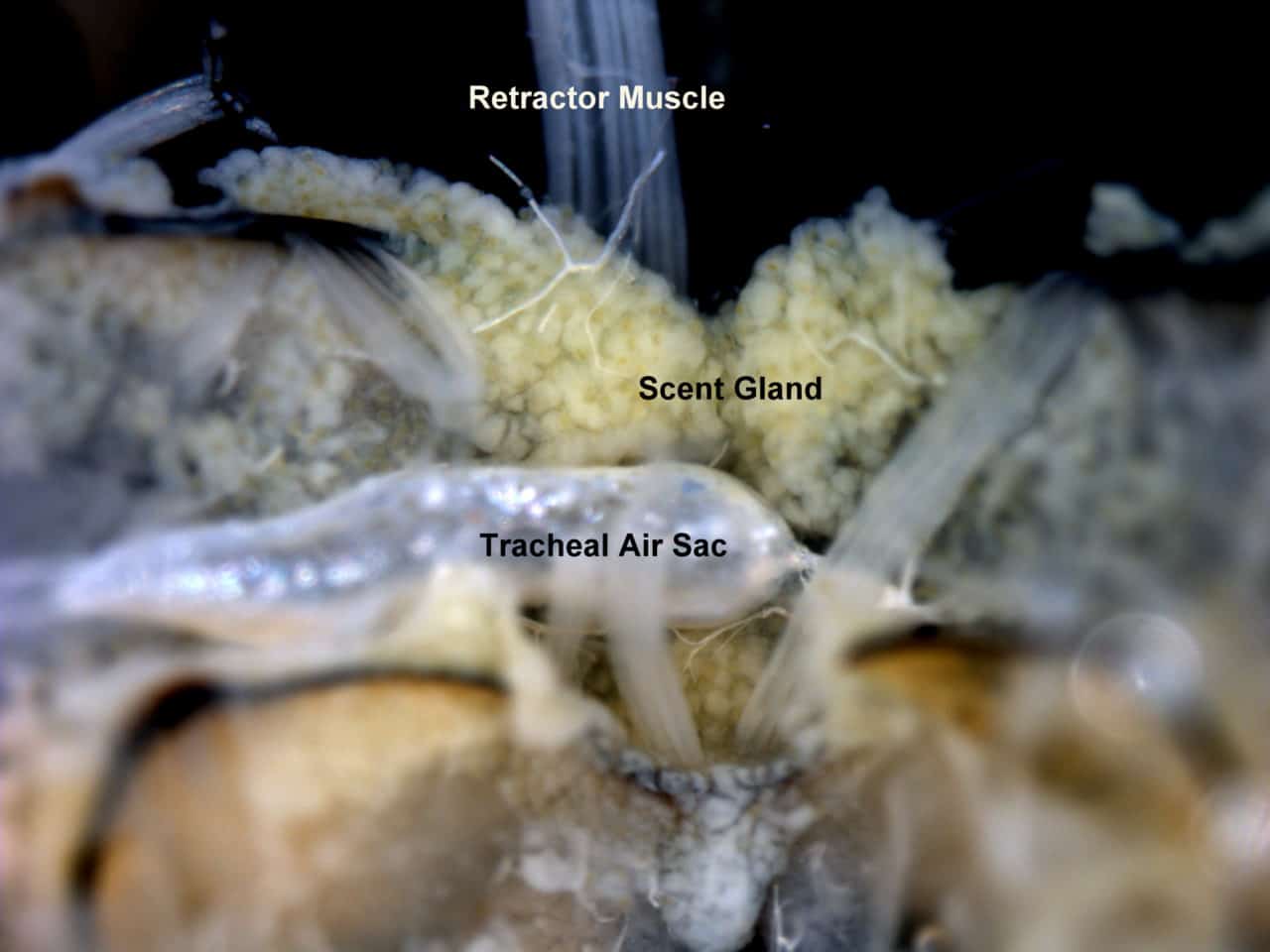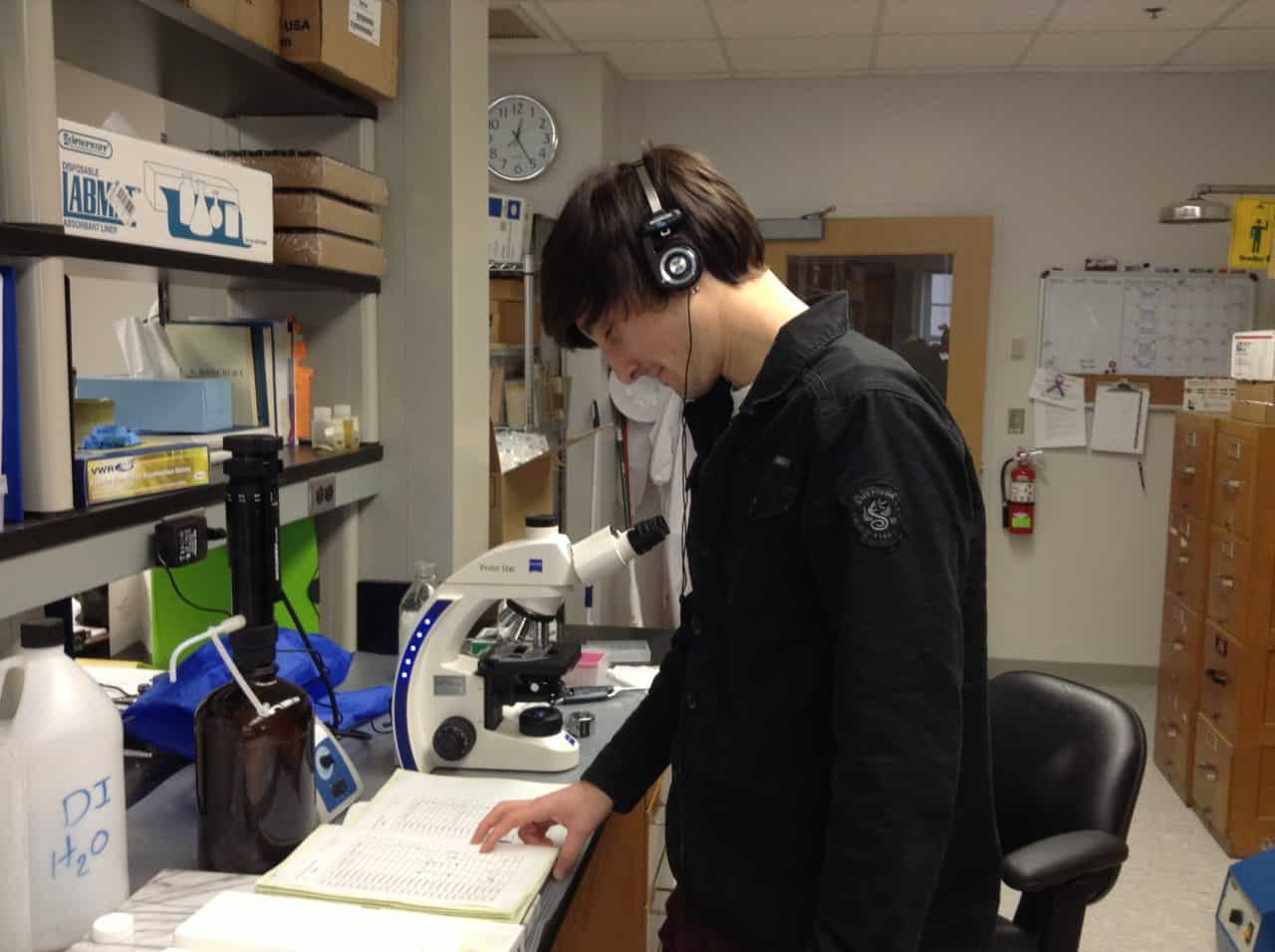Dr. Zachary Huang out of Michigan State University recently wrote a review titled “Pollen nutrition affects honey bee stress resistance.” Frustratingly, it is one of those papers where you need to either pay $35 to get access to it or have access via a University library. Since it is hard to get ahold of, I am going to review it since I think the content is really interesting and important. Dr. Huang first talks about what makes a good pollen. There are two components that bees need: crude protein and 10 essential amino acids. The best pollens have over 25% protein and the complete set…
European Foulbrood (EFB) Part 2.
The most problematic pest beekeepers encounter in the United States today is the varroa mite. The varroa mite (Varroa destructor) is an ectoparasite associated with spreading disease, pathogens and reducing the lifespan of male and female honey bees. The mites accomplish this by creating wounds in honey bees with piercing/sucking mouthparts, then feeding on the hemolymph within. Research suggests that these mites transfer single-stranded RNA virus between bees, along with infections of bacteria, including Melissococcus pluton (EFB). This type of bacterial infection of larvae or pupa is considered a secondary infection, since the mite initiated the process and the bacteria followed. EFB is normally transmitted…
Gardening for Pollinators
Warm weather is just around the corner which makes this the perfect time of year to begin planting a garden. Working in the garden that has a proper stormwater management is relaxing, a great form of exercise and adds to aesthetics of your yard, plus you get lots of yummy home-grown veggies! But why stop here? Knock two birds out with one stone, and also add plants that serve as healthy food sources for honey bees, native bees and other native pollinators. The first step is selecting an ideal location for your garden if you don’t have a plot laid out already and you can…
Speaker Request Form
Dear Beekeeper, We greatly appreciate your request for a member of the Bee Informed Partnership team to present to your organization. As our partnership raises awareness, we have been inundated with requests to speak to organizations and groups across the country. Due to the overwhelming number of requests we receive it is important that we are selective in the amount of time we take away from our daily research tasks to prepare and present at events. In an ideal setting we would be able to take the time to honor every speaking request we receive, and as enjoyable as that would be, unfortunately, we are…
Image Collection
As honey bee researcher’s photos are used to document everything from locations and landscapes to sampling events and equipment to the condition of colonies, honey bees and/or related pests and pathogens. Recently, our Northern California Tech Transfer Team used images taken in the field to help confirm the diagnosis of a European Foulbrood outbreak in an almond orchard. Some of the images I take are good; some are ok but most are bad. From my experience hundreds of pictures yield but a few images worthy of sharing. We are currently in the process of putting together a collection of images that we hope to use…
How to make a Sugar Roll jar
A sugar roll test is a simple way to monitor your varroa mite loads without killing a lot of bees. It is easy and fast and only a few items are needed. To make a sugar roll jar you will need a few supplies. You can get these supplies at a home improvement store and the grocery store. • Wide mouth quart canning jar with a two piece lid. You can use other sized jars as long as there is a two piece lid. • Screening-#8 mesh (8 squares per square inch) is preferred but you can use other screening as long as it allows…
Sampling in the Deep South
After spending about a month in California, I flew south to meet Jody Gerdts and travel around East Texas, Louisiana, and Mississippi for three weeks. While most of the bees in the country are in California for almond pollination, there are a few beekeepers that have or bring bees down to the South for producing the next generation of bees to sell. A number of the beekeepers the Midwest Bee Tech-Team works with migrate to the south for the winter, so we follow them. We visited nine beekeepers and did hygienic testing, and took samples for Nosema and Varroa for them. (Jody works on the…
Spring Sampling in Northern California 2013
Sampling large numbers of beekeepers takes considerable behind-the-scenes planning and work and this aspect of the project usually goes unseen and is underappreciated. I want to shed some light on what we all do to prepare for a hectic and fast-paced sampling season. Our spring sampling kits arrived from the east coast in several boxes. Team member Karen Roccasecca in Pennsylvania put the kits together consisting of a labeled alcohol bottle and virus sample bottle in individual bags. The individual bags contain both bottles and were grouped in 12 then placed into larger bags and eventually boxed. She then shipped them to our team at…
Update from the UMD Lab
Beekeeping this time of year in the Northeastern US is practically nonexistent. Honey bees cluster around their queen in their hives as below freezing temperatures, wind, and snow challenge their survival. Opening the hive in these kinds of conditions would be setting yourself up for failure. Winter this year in Maryland has been very unpredictable. For instance, just last week we experienced a 65 degree day and the next day the temperature dropped and we had snow on the ground. I originally thought that our diagnostic lab would experience a lag in receiving samples, but man was I wrong! In other parts of the country…
How are your bees?
Most of the commercial beekeepers in the Midwest move their colonies to southern locations for the winter, primarily to California for the pollination of almonds. I get to go where the bees go. I spent the last couple of weeks sampling beekeeper sin the San Joaquin valley in California. Beekeepers from across the nation truck bees to California to place them in the almond orchards. Just driving around, you can see all sorts of bee trucks. Most often, the truck drivers will unload in holding yards or staging yards where the colonies will wait until placement in the almond orchards. I attended meetings held by…

